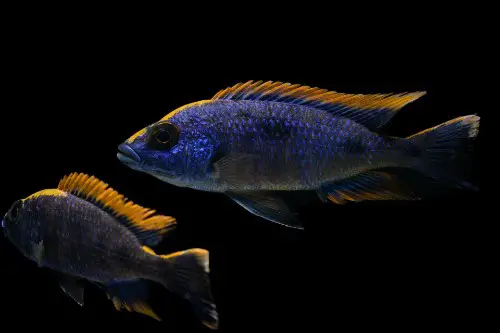Scientists, led by College of Bristol, have been finding out a fish sensory organ to grasp cues for collective behaviour which may very well be employed on underwater robots.
Pictured above: A Yellow blaze African cichlid. Picture credit score: Sarah Web page, Unsplash
This work was centred across the lateral line sensing organ in African cichlid fish, however present in virtually all fish species, that permits them to sense and interpret water pressures round them with sufficient acuity to detect exterior influences akin to neighbouring fish, adjustments in water circulation, predators and obstacles.
The lateral line system as an entire is distributed over the top, trunk and tail of the fish. It includes mechanoreceptors (neuromasts) which can be both inside subdermal channels or on the pores and skin’s floor.
Lead writer, Elliott Scott of the College of Bristol’s Division of Engineering Arithmetic, defined: “We have been searching for out if the completely different areas of the lateral line – the lateral line on the top versus the lateral line on the physique, or the several types of lateral line sensory models akin to these on the pores and skin, versus these below it, play completely different roles in how the fish is ready to sense its setting by means of environmental stress readings.
“We did this in a novel manner, by utilizing hybrid fish, that allowed for the pure technology of variation.”
They found the lateral line system across the head has an important affect on how effectively fish are in a position to swim in a shoal. In the meantime, the presence of extra lateral line sensory models, neuromasts, which can be discovered below the pores and skin lead to fish swimming nearer collectively, whereas a better presence of neuromasts on the pores and skin are likely to lead to fish swimming additional aside.
In simulation, the researchers have been in a position to present how the mechanisms behind the lateral line work are relevant at not simply the tiny scales present in precise fish, however at bigger scales too. This might encourage a novel sort of easily-manufactured stress sensor for underwater robotics, significantly swarm robotics, the place value is a big issue.
Elliott mentioned: “These findings present a greater understanding of how the lateral line informs shoaling behaviour in fish, whereas additionally contributing a novel design of cheap stress sensor that may very well be helpful on underwater robots that must navigate in darkish or murky environments.”
The staff now plan to develop the sensor additional and combine it right into a robotic platform to assist a robotic navigate underwater and show its effectiveness.
Supply: University of Bristol



Discussion about this post